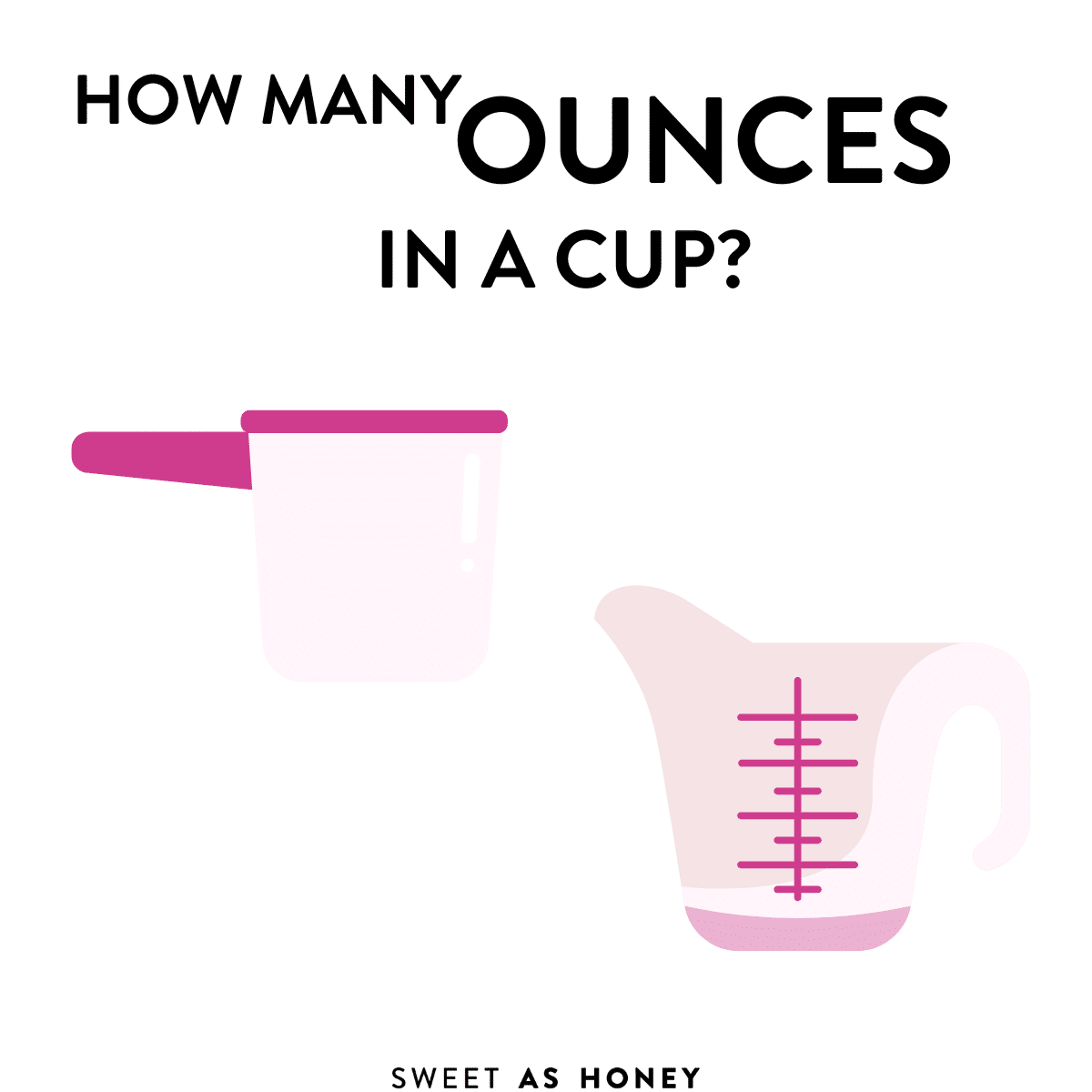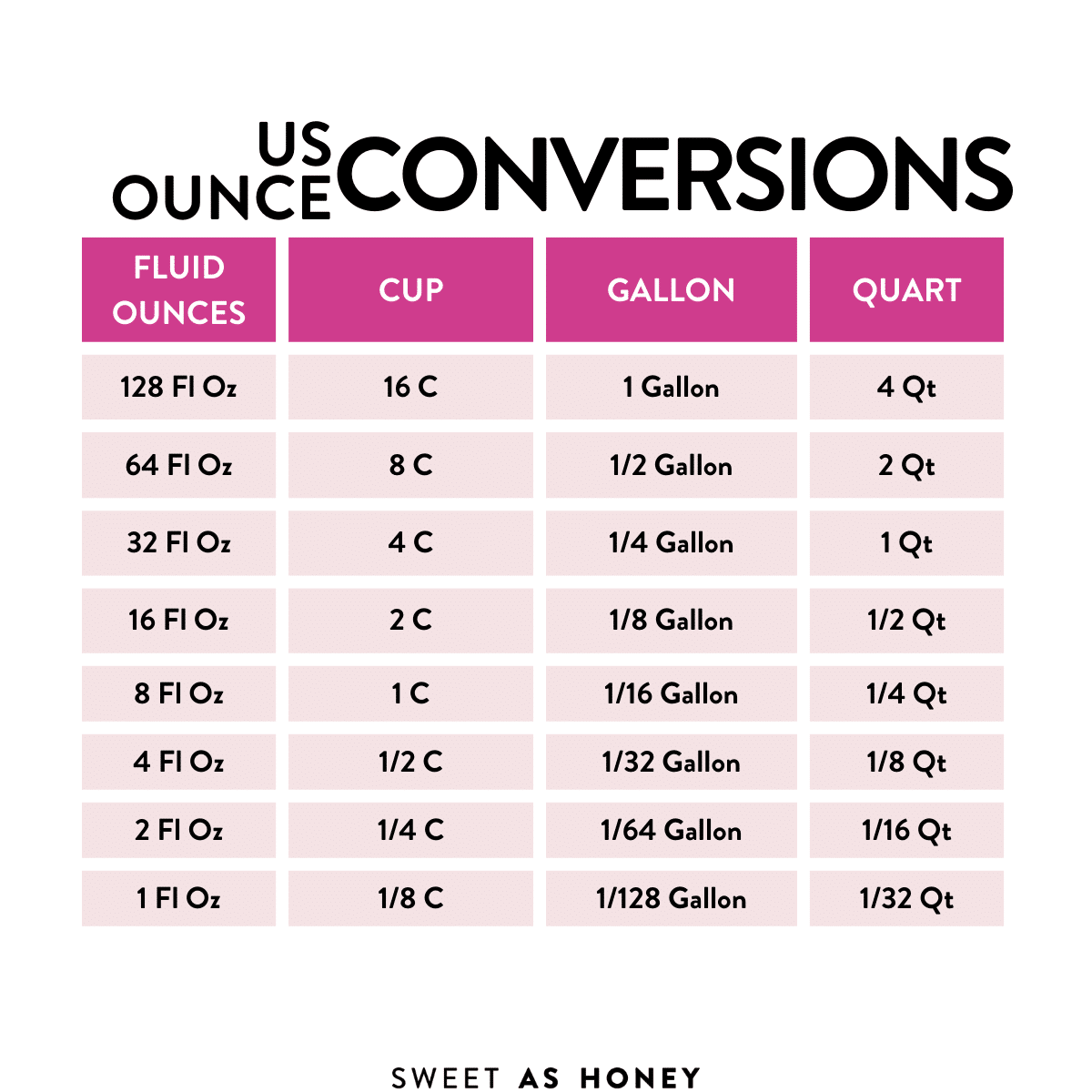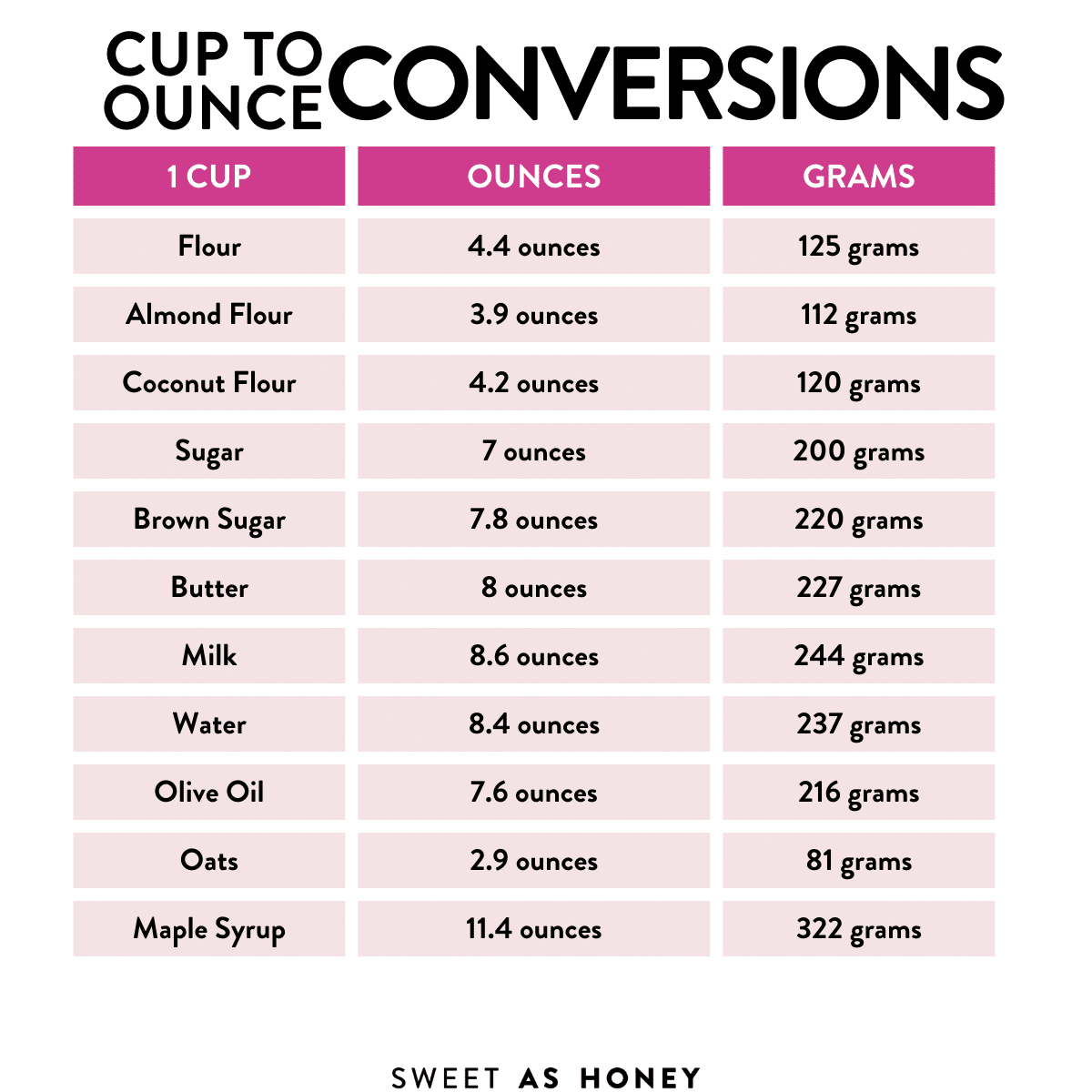How Many Ounces Are In A Cup
This recipe may contain Amazon or other affiliate links. As an Amazon Associate I earn from qualifying purchases.
Measuring ingredients accurately is a crucial aspect of cooking and baking. Knowing how many ounces are in a cup can help you follow recipes more precisely and achieve consistent results.
In this article, we’ll explore the topic of how many ounces are in a cup for both fluid and dry ingredients, provide conversion tables for different ingredients, and offer some helpful tips for measuring ingredients accurately.

How Many Fluid Ounces Are in a Cup?
A cup is a unit of volume measurement commonly used in cooking and baking. It’s equivalent to 8 fluid ounces (fl oz) or 236.59 milliliters (ml) in the US customary system.
However, the metric system defines a cup as 250 ml or 8.45 fl oz.
| Fluid Ounces | US Cup | Gallon |
|---|---|---|
| 128 Fl Oz | 16 C | 1 Gallon |
| 64 Fl Oz | 8 C | 1/2 Gallon |
| 32 Fl Oz | 4 C | 1/4 Gallon |
| 16 Fl Oz | 2 C | 1/8 Gallon |
| 8 Fl Oz | 1 C | 1/16 Gallon |
| 4 Fl Oz | 1/2 C | 1/32 Gallon |
| 2 Fl Oz | 1/4 C | 1/64 Gallon |
| 1 Fl Oz | 1/8 C | 1/128 Gallon |
There are also some lesser-known cups such as:
- US Legal Cup (for nutrition labels) – 240 ml or 8.11537 ounces
- Canadian Cup – 250 ml or 8.45351
- Conventional Canadian Cup – 227.3045 ml or 7.6860795232 ounces
- UK Imperial Cup – 284.131 ml or 9.607612084 ounces
- Japanese Cup – 200 ml or 6.7628 ounces
- Russian Cup – 123 ml or 4.159125 ounces
Therefore, the answer to the question of how many ounces are in a cup depends on the system of measurement you’re using.
In the US, a cup contains 8 fl oz, while in the metric system, it contains 8.45 fl oz.
| Cup Type | Ounces | Milliliters |
|---|---|---|
| US Customary Cup | 8 fl oz | 236.59 ml |
| Metric Cup | 8.45 fl oz | 250 ml |
| US Legal Cup | 8.11 fl oz | 240 ml |
| Canadian Cup | 8.45 fl oz | 250 ml |
| Conventional Canadian Cup | 7.69 fl oz | 227.3 ml |
| UK Imperial Cup | 9.61 fl oz | 284.13 ml |
| Japanese Cup | 6.76 fl oz | 200 ml |
| Russian Cup | 4.16 fl oz | 123 ml |

Conversion Tables for Different Ingredients
When it comes to measuring ingredients, different ingredients have different densities, and therefore, their weight per volume may vary.
Intuitively, you can feel that a cup full of lead will weigh more than a cup of puffed rice.
This means that the number of ounces in a cup of one ingredient may not be the same as the number of ounces in a cup of another ingredient. Here are some conversion tables for common ingredients:
- Flour: 1 cup of all-purpose flour weighs 4.4 oz (125 grams).
- Sugar: 1 cup of granulated sugar weighs 7 oz (200 grams).
- Brown sugar: 1 cup of packed brown sugar weighs 7.8 oz (220 grams).
- Butter: 1 cup of butter weighs 8 oz (227 grams).
- Milk: 1 cup of milk weighs 8.6 oz (244 grams).
- Water: 1 cup of water weighs 8.4 oz (237 grams).
- Olive Oil: 1 cup of oil weighs 7.6 oz (216 grams).
- Oats: 1 cup of oats weighs 2.9 oz (81 grams).
- Maple Syrup: 1 cup of maple syrup weighs 11.4 oz (322 grams).
It’s important to note that these conversion tables are approximate, and the weight of the ingredients may vary depending on factors such as humidity, temperature, and the method of measuring.
| 1 Cup of | Measures in Ounces | Measures in Grams |
|---|---|---|
| Flour | 4.4 ounces | 125 grams |
| Almond Flour | 3.9 ounces | 112 grams |
| Coconut Flour | 4.2 ounces | 120 grams |
| Sugar | 7 ounces | 200 grams |
| Brown Sugar | 7.8 ounces | 220 grams |
| Butter | 8 ounces | 227 grams |
| Milk | 8.6 ounces | 244 grams |
| Water | 8.4 ounces | 237 grams |
| Olive Oil | 7.6 ounces | 216 grams |
| Oats | 2.9 ounces | 81 grams |
| Maple Syrup | 11.4 ounces | 322 grams |

Tips for Measuring Ingredients Accurately
Measuring ingredients accurately is essential for getting the desired texture and taste in your recipes. Here are some tips for measuring ingredients accurately:
- Use Measuring Cups and Spoons: Measuring cups and spoons are essential tools for measuring ingredients accurately. Invest in a set of good-quality measuring cups and spoons, and use them consistently for all your recipes. Make sure you pick the right ones! If you use recipes with US Customary measurements like the ones found on Sweet As Honey, pick US cups!
- Level Off Dry Ingredients: When measuring dry ingredients such as flour or sugar, it’s important to level off the top of the measuring cup with a straight edge, such as a knife or spatula. This helps to ensure that you’re using the correct amount of ingredients.
- Use a Kitchen Scale: A kitchen scale can be a useful tool for measuring ingredients by weight. It’s especially helpful when measuring ingredients such as flour, which can be compressed and may vary in weight depending on how it’s packed.
- Measure Liquids at Eye Level: When measuring liquids, such as milk or water, it’s important to measure them at eye level. This helps to ensure that you’re using the correct amount of liquid and can prevent over-measuring or under-measuring.
Converting Recipes to Metric or US Customary Units
If you’re following a recipe that uses a different system of measurement than what you’re used to, you may need to convert the recipe to the system you’re familiar with.
Here are some conversion factors you can use:
- To convert from US customary units to metric units:
1 cup = 236.59 ml
1 oz = 28.35 grams
- To convert from metric units to US customary units:
1 ml = 0.00423 cups
1 gram = 0.03527 oz
It’s important to note that when converting recipes, it’s best to use precise measurements and avoid rounding up or down, as this can affect the outcome of your recipe.
Conclusion
Knowing how many ounces are in a cup is a fundamental aspect of cooking and baking. It’s essential for following recipes accurately and achieving consistent results.
In this article, we’ve explored the topic of how many ounces are in a cup, provided conversion tables for different ingredients, and offered some helpful tips for measuring ingredients accurately.
By following these guidelines, you can ensure that your recipes turn out perfectly every time.
Posted In:
Disclaimer
The recipes, instructions, and articles on this website should not be taken or used as medical advice. The nutritional data provided on Sweetashoney is to be used as indicative only. The nutrition data is calculated using WP Recipe Maker. Net Carbs is calculated by removing the fiber and some sweeteners from the total Carbohydrates.
You should always calculate the nutritional data yourself instead of relying on Sweetashoney's data. Sweetashoney and its recipes and articles are not intended to cure, prevent, diagnose, or treat any disease. Sweetashoney cannot be liable for adverse reactions or any other outcome resulting from the use of recipes or advice found on the Website.

Share this post!
If you enjoyed this post, share it with your close ones!
Leave a comment